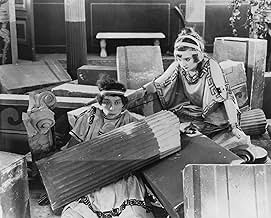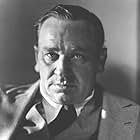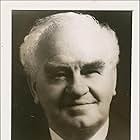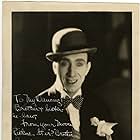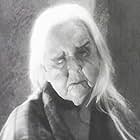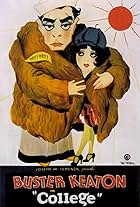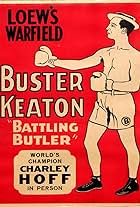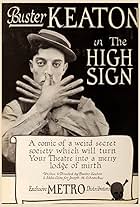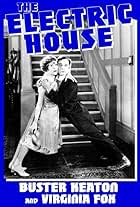IMDb RATING
7.0/10
5.3K
YOUR RATING
The misadventures of Buster in three separate historical periods.The misadventures of Buster in three separate historical periods.The misadventures of Buster in three separate historical periods.
- Awards
- 1 nomination
Kewpie Morgan
- The Emperor
- (as Horace Morgan)
- …
Lionel Belmore
- Undetermined Role
- (unconfirmed)
- (uncredited)
Bernard Berger
- Roman-age child
- (uncredited)
Basil Bookasta
- Stone-age Child
- (uncredited)
George Bookasta
- Stone-age Child
- (uncredited)
George Davis
- Roman Guard Knocked Down
- (uncredited)
Louise Emmons
- Old Fortune Teller
- (uncredited)
F.F. Guenste
- Butler
- (uncredited)
Blanche Payson
- The Amazon
- (uncredited)
Storyline
Did you know
- TriviaThe most famous stunt in the movie was actually built around what went wrong with the original stunt. Buster Keaton intended to leap from a board projecting from one building onto the roof of another building, but he fell short, smashing into the brick wall and falling into a net off-screen. He was injured badly enough to be laid up for three days. However, when he saw the film (the camera operators were instructed to always keep filming, no matter what happened), he not only kept the mishap, he built on it, adding the fall through three awnings, the loose downspout that propels him into the firehouse and the slide down the fire pole.
- GoofsIn the medium shot of the Stone Age soothsayer scene, Buster's hands are resting together near the side of the turtle. But in the cut to a close-up, we see only a hand double's right hand, and it's directly in front of the turtle's mouth. (It's clearly a hand double, since Keaton was missing his right index finger tip.)
- Alternate versionsIn 1995, Film Preservation Associates copyrighted a version with an orchestral score; no details were specified on the print.
- ConnectionsEdited into The Golden Age of Buster Keaton (1979)
Featured review
D.W. Griffith could have made any movie he wanted to after the enormous financial success of "The Birth of a Nation"; he chose to make the most technically ambitious film to that date, "Intolerance". He took a risk with such innovations in film montage and form, and the well-known financial train wreck resulted. Buster Keaton doesn't take that kind of a risk with "Three Ages", a parody of "Intolerance". This is Keaton's first feature-length film of his own (he only acted in "The Saphead"). He had the fallback plan of dividing the three episodes in this feature into three separate shorts, which Griffith did do with "Intolerance". Keaton didn't have to. Chaplin had already succeeded with feature-length comedies, so if Keaton was taking a risk here, it was completely calculated.
Chaplin had already done a parody of another film, too, with "Burlesque on Carmen" (1915). Keaton appears to allude to that parody, as well. The wrestling scene in the Ancient Rome episode references the swordfight that turns into a wrestling match in Chaplin's burlesque. The comical distance from the plot of both scenes is the same, too. Furthermore, Chaplin's film imitated the glossy style of DeMille's "Carmen", and Chaplin's film seemed a tribute to that film. Keaton doesn't attempt the radical editing, narrative structure or monumental nature in his parody, but it seems respectful of "Intolerance" nonetheless. At least, the stories aren't told completely straightforward as in other "Intolerance"-inspired works, such as Dreyer's "Leaves from Satan's Book" (Blade af Satans bog, 1921) and Fritz Lang's "Destiny" (Der Müde Tod, 1921). There is some mild jumping back and forth between episodes.
Where Keaton did take risks, however, is in his physical, daredevil comedy. That's Keaton unintentionally failing to jump across buildings in the modern episode. Reportedly, he was convinced to alter the scene rather than attempt the jump again. And, it wasn't just Keaton who took risks; the anachronistic baseball gag, for example, was rather dangerous. Thus, although in a different way, Keaton, like Griffith, took risks with his big film. And, I think they both succeeded.
Chaplin had already done a parody of another film, too, with "Burlesque on Carmen" (1915). Keaton appears to allude to that parody, as well. The wrestling scene in the Ancient Rome episode references the swordfight that turns into a wrestling match in Chaplin's burlesque. The comical distance from the plot of both scenes is the same, too. Furthermore, Chaplin's film imitated the glossy style of DeMille's "Carmen", and Chaplin's film seemed a tribute to that film. Keaton doesn't attempt the radical editing, narrative structure or monumental nature in his parody, but it seems respectful of "Intolerance" nonetheless. At least, the stories aren't told completely straightforward as in other "Intolerance"-inspired works, such as Dreyer's "Leaves from Satan's Book" (Blade af Satans bog, 1921) and Fritz Lang's "Destiny" (Der Müde Tod, 1921). There is some mild jumping back and forth between episodes.
Where Keaton did take risks, however, is in his physical, daredevil comedy. That's Keaton unintentionally failing to jump across buildings in the modern episode. Reportedly, he was convinced to alter the scene rather than attempt the jump again. And, it wasn't just Keaton who took risks; the anachronistic baseball gag, for example, was rather dangerous. Thus, although in a different way, Keaton, like Griffith, took risks with his big film. And, I think they both succeeded.
- Cineanalyst
- Jun 28, 2006
- Permalink
- How long is Three Ages?Powered by Alexa
Details
Box office
- Gross worldwide
- $177
- Runtime1 hour 3 minutes
- Color
- Sound mix
- Aspect ratio
- 1.33 : 1
Contribute to this page
Suggest an edit or add missing content


